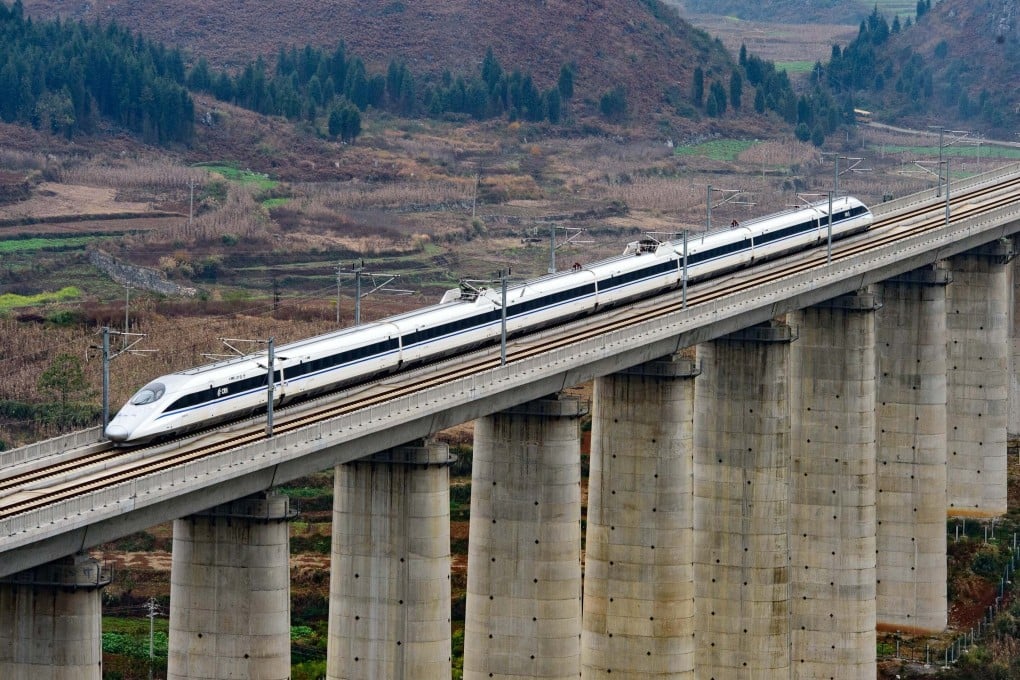Is there a dark side to China’s high-speed rail network?
- Researchers say bullet trains could mean lower economic activity in some western parts of the country
- The conclusion is based on analysis of satellite data showing changes in night light

High-speed rail could be hurting rather than helping local economies in western China, with some cities becoming darker at night after a station comes to town, according to new research.
In a study published in the peer-reviewed domestic journal Geographical Research on Friday, the researchers said that on average, each high-speed rail station in western China corresponded to a more than 1.5 per cent drop in the intensity of local economic activity.
“China is entering an era of high-speed rail. Many cities hope to use rail construction to stimulate their economic growth. However, there are many differences in cities,” Professor Niu Fangqu and colleagues with the Chinese Academy of Sciences’ Institute of Geographic Sciences and Natural Resources Research said in the paper.
“A full understanding of the impact will be important for the coordination of regional economic development.”

01:11
How big is China's high-speed rail network?
The researchers based their calculation on changes in night light, analysing satellite data of 527 station sites in 180 cities since 2004, when China’s high-speed rail project began.
They found that in eastern China, a high-speed rail station boosted the economy by nearly 9 per cent within a range of 4km (2.5 miles). In central China the increase was 3.6 per cent and in the northeast 4.4 per cent.